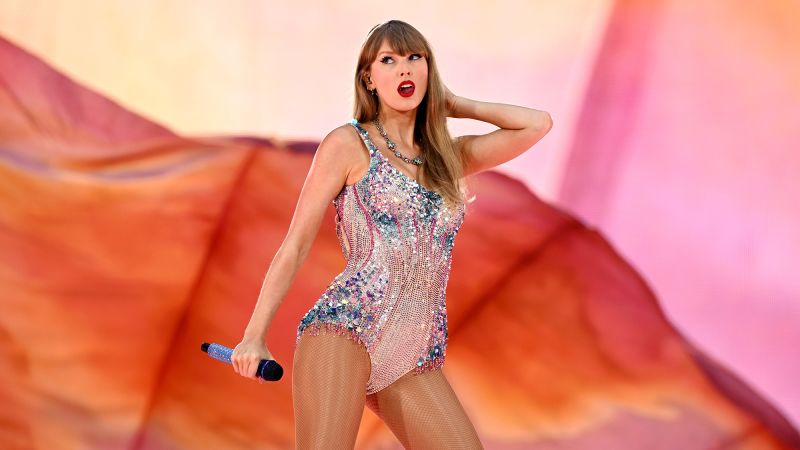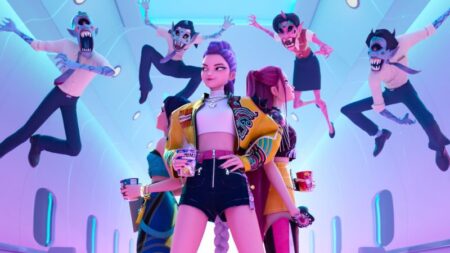The name Taylor Swift often dominates conversations in pop culture, particularly when it comes to her music releases and any associated themes. As she gears up for her new album titled “The Life of a Showgirl,” fans have observed some striking visual cues that suggest a careful, intentional rollout. Most prominently, the color orange features heavily in promotional elements, making it almost a signature of this upcoming project. A recent clip highlighting her guest appearance on the podcast “New Heights,” hosted by her boyfriend Travis Kelce and his brother Jason Kelce, showcased an elaborate set adorned primarily in this distinctive hue, from Swift’s striking lipstick to the graphics displayed around her.
In a fascinating twist, the Empire State Building in New York also joined the myriad of orange visuals by illuminating its upper structure in orange light—a gesture accompanied by the caption “Onto the next era.” Clearly, the color is creating quite a buzz. Discussions surrounding Swift’s new endeavor could be heightened given the overwhelming success of her previous tour, aptly concluded as the Eras Tour, which had garnered significant acclaim. Swift’s dedicated fanbase, affectionately known as Swifties, remains eagerly engaged and attuned to every nuance of her creative process.
However, the seeming alignment of the orange motif isn’t merely a superficial design choice; it has led to speculation regarding a potential message aimed at former President Donald Trump. Swift’s musical journey has seen her vocalize her political stances, especially notably during Trump’s first term, when she publicly endorsed Democratic candidates in her home state of Tennessee ahead of the midterm elections in 2018. This decision ignited a firestorm, with Trump infamously responding by stating that he liked Swift’s music “25 percent less.”
This ricochet of comments persisted beyond their initial exchange. In 2019, Swift articulated her concerns about Trump’s leadership style to The Guardian, suggesting he believed in an “autocracy.” Not long after, her Netflix documentary, “Miss Americana,” featured a vital scene revealing her rationale for voicing opposition to Trump. She expressed a desire to align not only with her values but also to position herself on “the right side of history.”
Swift reaffirmed her political engagement in the lead-up to the 2024 presidential election when she endorsed Kamala Harris, then the Vice President, against Trump. This drew a harsh retort from Trump, who posted on his Truth Social account, “I hate Taylor Swift.” Interestingly, in an unexpected twist, Trump commented much later in May 2025 that since his outburst, Swift had presumably lost her appeal, asking followers, “Has anyone noticed that, since I said ‘I HATE TAYLOR SWIFT,’ she’s no longer ‘HOT?’”
This back-and-forth has given rise to interpretations regarding Swift’s choice of orange in her promotional campaign. Some analysts speculate that this could act as a clever rebuttal to the president. Yet, notable publications, including Vogue, have pointed out that Swift has had an established relationship with the color orange long before her recent political entanglements became prominent. Elizabeth Vlossak, an associate professor and historian, indicated Swift’s strong association with the color, tracing its origins back to her 2017 music video for “Look What You Made Me Do,” where she donned vibrant orange attire while ensnared in a golden birdcage.
Further, during the latter stages of her celebrated Eras Tour, Swift increasingly integrated orange into her stage costume designs, even exiting the performance through a door of the same hue. The color seems to be less a political statement and more a thematic element that has consistently followed her artistic journey. As her new project unfolds, the richness of her choices will continue to warrant examination by both fans and critics alike, showcasing not only her musical evolution but also her ongoing engagement with pop culture and politics. Indeed, Swift has a penchant for layering her work with meaning—something especially noteworthy in our current age, where artists are often expected to communicate their beliefs and identities beyond their music.











